The National Institute for Occupational Safety and Health (NIOSH), has uploaded several exoskeleton technology-related webinars to its YouTube channel for easier access. The webinars were originally recorded between 2019 and 2021, and while normally that would be considered “old,” the presenters and topics are of uniquely high quality. Viewers looking to learn more about occupational exoskeletons will find the six webinars recorded here both informative and relevant.
Lightweight & Nonrestrictive Exosuits for Clinic Community & Workplace
“This webinar gives an overview of collaborated work on developing lightweight and nonrestrictive wearable robot technologies for augmenting and restoring human performance. The performance of the technologies is characterized through biomechanical and physiological studies so as to further the scientific understanding of how humans interact with such wearable devices. The research work is conducted by a multidisciplinary team of students and research staff with backgrounds in engineering, materials science, apparel design, industrial design, biomechanics, and physical therapy, in addition to valuable collaborations with colleagues from Harvard, Boston University, and beyond. The long-term vision is for ubiquitous soft wearable robots that can be worn all day, every day, in the community, clinic, and workplace. The speaker Dr. Conor Walsh is the Paul A. Maeder Professor of Engineering and Applied Sciences at the John A. Paulson Harvard School of Engineering and Applied Sciences and an Associate Faculty Member at the Wyss Institute for Biologically Inspired Engineering. He is the founder of the Harvard Biodesign Lab.”
This is a valuable presentation by Dr. Conor Walsh which feels like it has been plucked right out of an exoskeleton conference! Dr. Walsh runs through the groundbreaking research at the Wyss Institute and concludes with prototypes of a semi-passive exoskeleton that knows when to deactivate based on the user’s movements. Even though this presentation is from one year ago, it still very much represents the cutting edge of occupation wearable soft robotics technology. The presentation is also stored on the CDC website: link.
Crawl, Walk, Run, Fly-Incremental ROI-Boeing Industrial Exoskeletons
“Exoskeleton technology is beginning to inch its way forward into the industrial workforce as noted in recent media releases from automotive and aerospace manufacturing companies. Boeing has been evaluating the efficacy of industrial exoskeleton technology since 2012 for its factory workers in production and maintenance. In order for the company to have continuously performed such endeavors however, subject matter experts needed to prove to leadership and end users that this potential worker enhancement technology was worth the Return on Investment (ROI). The speaker Dr. Christopher Reid highlights different ROI approaches that Boeing has learned over the last seven years of discovery through the “crawl, walk, run, fly” analogy. Dr. Christopher Reid is a Human Factors & Ergonomics Associate Technical Fellow for Boeing’s Environment Health &Safety (EHS) Organization in Charleston. He is the president for the Human Factors and Ergonomics Society; and the chair of the Human Factors & Ergonomics Subcommittee for the ASTM F48 standard on Exoskeletons/Exosuits.”
Few companies and people (there is a presentation by Toyota of North America in this article too) have spent as much time and effort in understanding how to implement industrial exoskeletons, to the point where donning one becomes a habit for the employees. Dr. Christopher Reid has presented variations on this presentation at multiple conferences and events. This recording is of slightly lower video quality than other presentations here but it is worth going through it if you have never heard him present before.
The above presentation is also stored on the CDC website: link
Communicating the Value of Ergonomics to Business Stakeholders
“…The speaker Mr. Blake McGowan presents how to communicate the value of an ergonomics process to different business stakeholders and to generate additional support for your ergonomics efforts. Mr. Blake McGowan is the Director of Ergonomic Research at VelocityEHS company. He oversees large-scale ergonomics initiatives that help organizations build internal ergonomics expertise using software solutions.”
While not directly addressing exoskeleton technology, understanding how to communicate the Return on Investment (ROI) value for any ergonomic aid is critical to the success of both its initial acquisition and final implementation.
The above recording can be viewed on the CDC website (link).
Ergonomic Needs and Barriers for Exoskeleton Implementation in the Operating Room
“Musculoskeletal symptoms and injuries have adverse impacts on worker health and performance in surgical environments. Though the ergonomic risks in surgery are well-recognized, the mitigation of these risk factors is especially difficult in surgery due to the demanding work and restrictive work environment (e.g., sterility) that must prioritize patient safety. This webinar presents 1) ergonomics in the operating room and 2) facilitators and barriers to exoskeleton technology for surgical team members. The first speaker is Dr. Dimitrios Stefanidis, a professor of surgery and Chief of minimally invasive and bariatric surgery in the department of surgery at Indiana University School of Medicine. The second speaker is Dr. Denny Yu, an Assistant Professor of Industrial Engineering at Purdue University, and an Adjunct Assistant Professor of Surgery at Indiana University School of Medicine.”
If you follow the Exoskeleton Report, you have likely encountered the idea that industrial (occupation) exoskeletons could be beneficial to surgeons. This benefit could be in the form of chairless chairs, back support exoskeletons, or shoulder support wearables. The above two-part webinar runs through the ergonomic risks that surgeons and medical professionals face in the operating room and the obstacles to exoskeleton adoption.
The recording above is also stored on the CDC website: link
Emerging Technologies to Enhance Safety at Toyota North America
“Toyota Motor North America is invested in exploring emerging technologies to enhance safety, particularly to reduce the incidence of musculoskeletal disorders. These technologies include exoskeletons to reduce fatigue in different parts of the body, such as shoulder and hand, as well as wearable sensors to automate and enhance risk assessments. Virtual reality is also being explored to improve all aspects of training, including ergonomics. This presentation shares key highlights of these trials and implementations, as well as top challenges and successes. The speaker Marisol Barrero manages the development and integration of safety-related technology across manufacturing operations. Externally she serves on the Boards of the Automotive Exoskeleton Group (AExG), sponsored via the Wearable Robotics Association, as well as the newly established ASTM Exoskeleton Center of Excellence.”
When it comes to industrial exoskeleton presentations, few speakers have been as impactful as Marisol Barrero has been over the past few years. Her presentation demonstrates a methodology for matching specific exoskeletons to the right employee tasks. While it is impossible to confirm, Toyota is likely the single largest adopter of exo technology in North America. Furthermore, she includes the initial results of exo implementation programs (spoiler alert: reduction to zero injuries). The presentation also explores implementation challenges and next steps.
The presentation can also be viewed on the CDC website.
ASTM Exo Technology Center of Excallence (ET CoE)
“The presentation provides an overview of the ASTM Exo Technology Center of Excellence (ET CoE) and its current activities to accelerate research to standards. The ET CoE is engaging in four main areas: Research to Standards, Education/Workforce Development and Training, Standards, and Certification. In this presentation, planned and ongoing efforts in these areas are discussed, including a brief overview of ASTM Committee F48 on Exoskeletons and Exosuits and its linkages to the ET CoE. Dr. William “Bill” Billotte is the Director of Global Exo Technology Programs and the Executive Director of the ASTM Exo Technology Center of Excellence with ASTM International.”
Last but not least, ASTM’s Dr. Bill Billotte provides a full overview of the efforts by ASTM Committee F48 on Exoskeletons and Exosuits and the ASTM Exo Technology Center of Excellence. (The Exoskeleton Report team participates in both). Standards and ultimately certification are critical to increasing confidence in this emerging technological field. They are a necessary step towards wider adoption of this technology. Dr. Billotte and ASTM have not slowed down at the least since 2020, publishing dozens of standards and multiple education videos, as well sponsoring industrial surveys and sponsoring five research projects (learn more on the ET CoE website).
Special thanks to the Centers for Disease Control and Prevention (CDC) YouTube channel for uploading these videos. While they reside on the main CDC website (Musculoskeletal Health Program: Webinars) they are significantly more difficult to find there. Presentations like these are what one can expect at conference event series like WearRAcon and ErgoX.



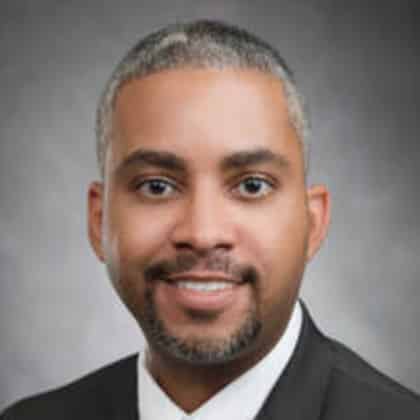


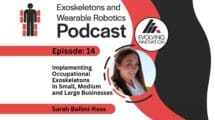
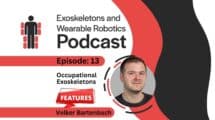
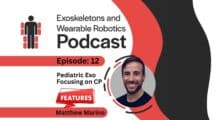
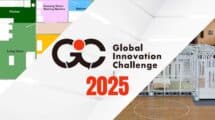


Add Comment